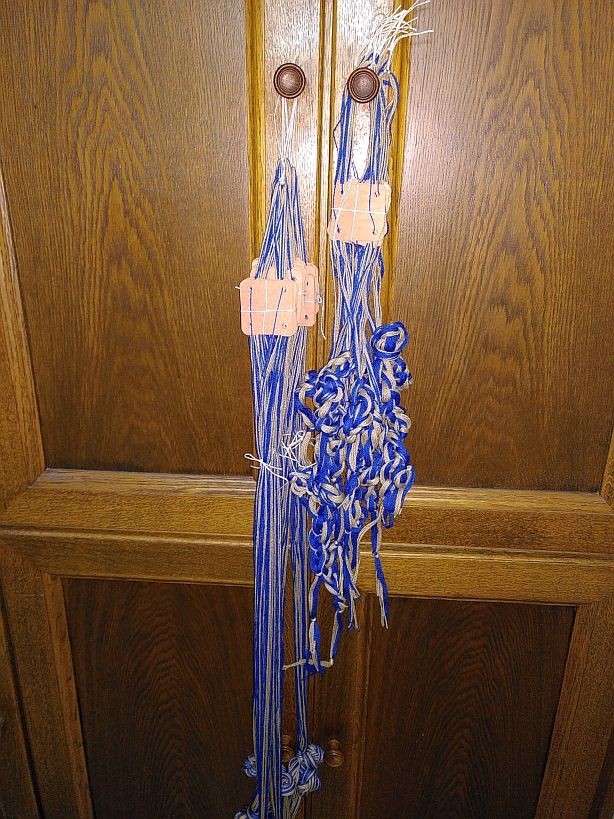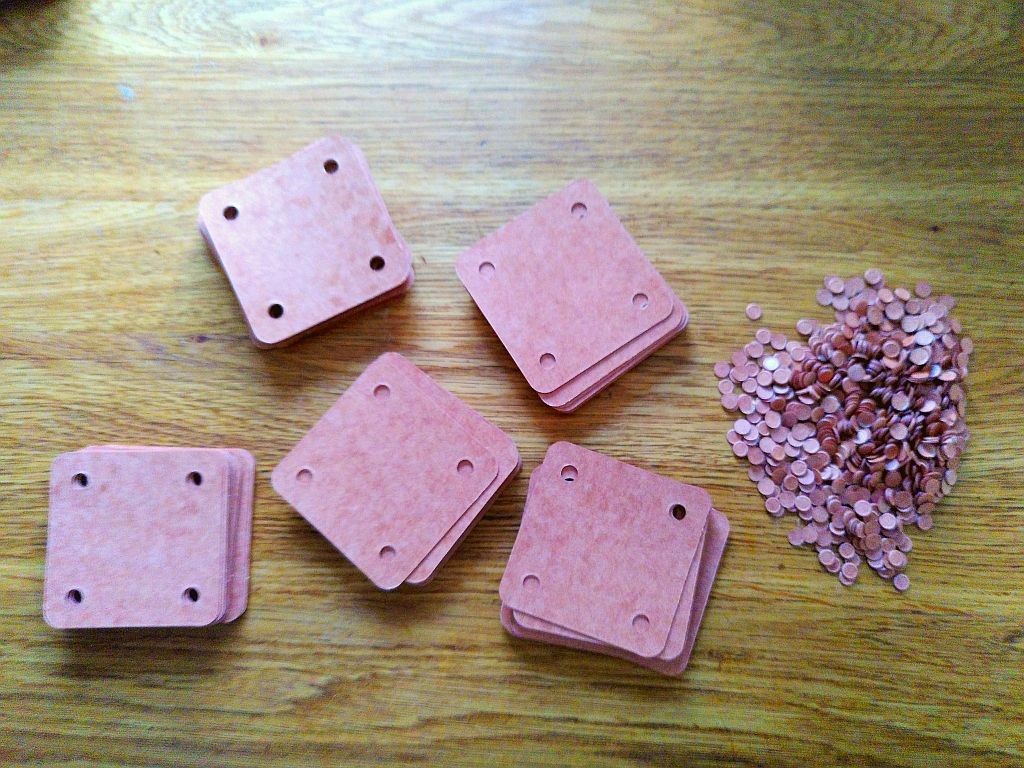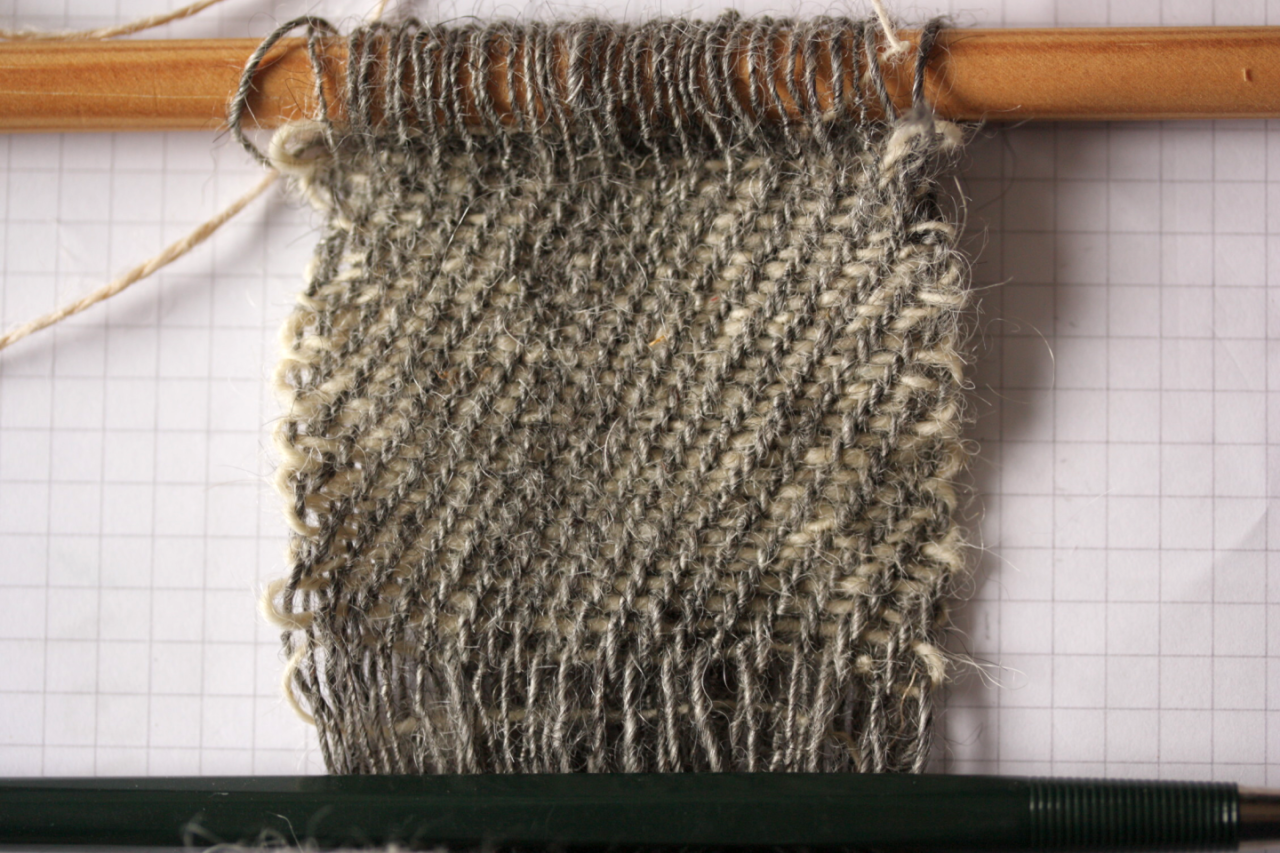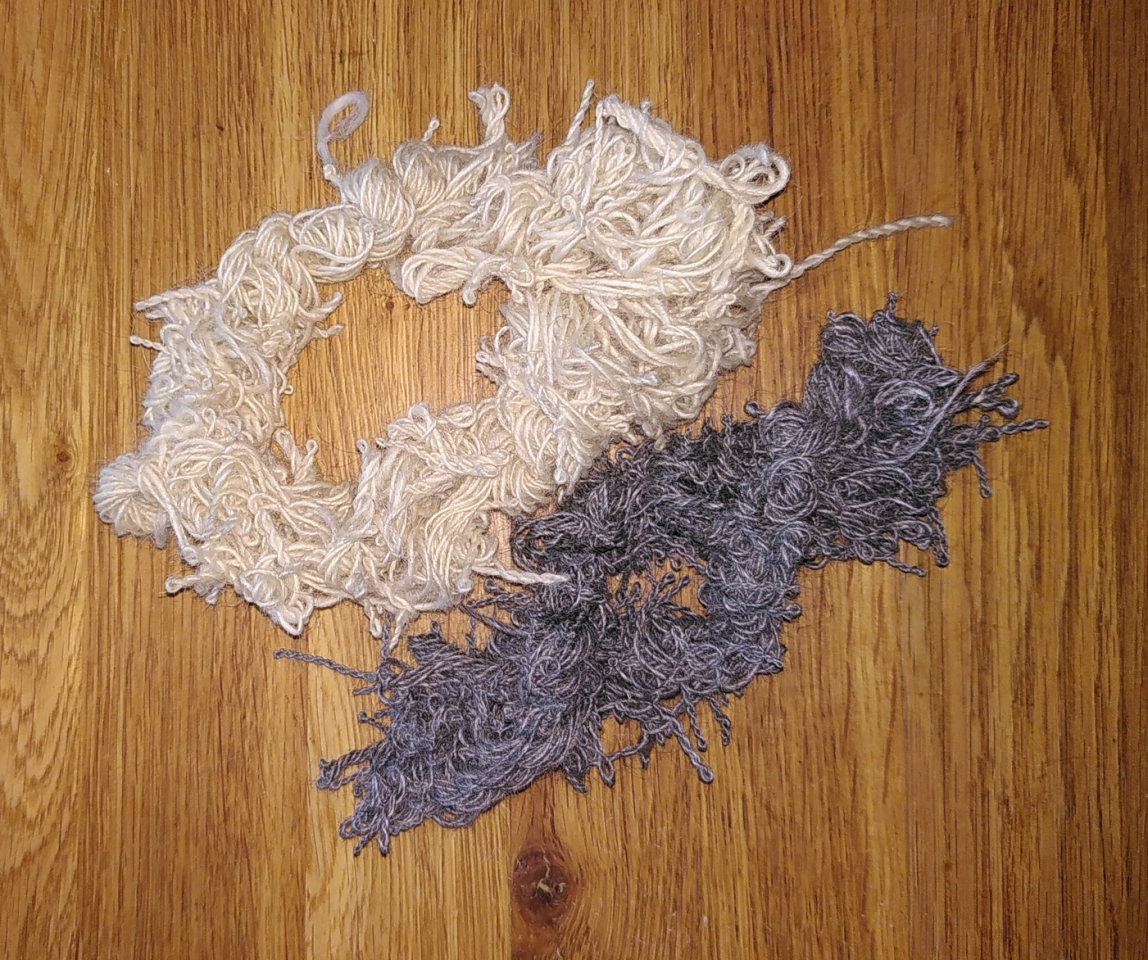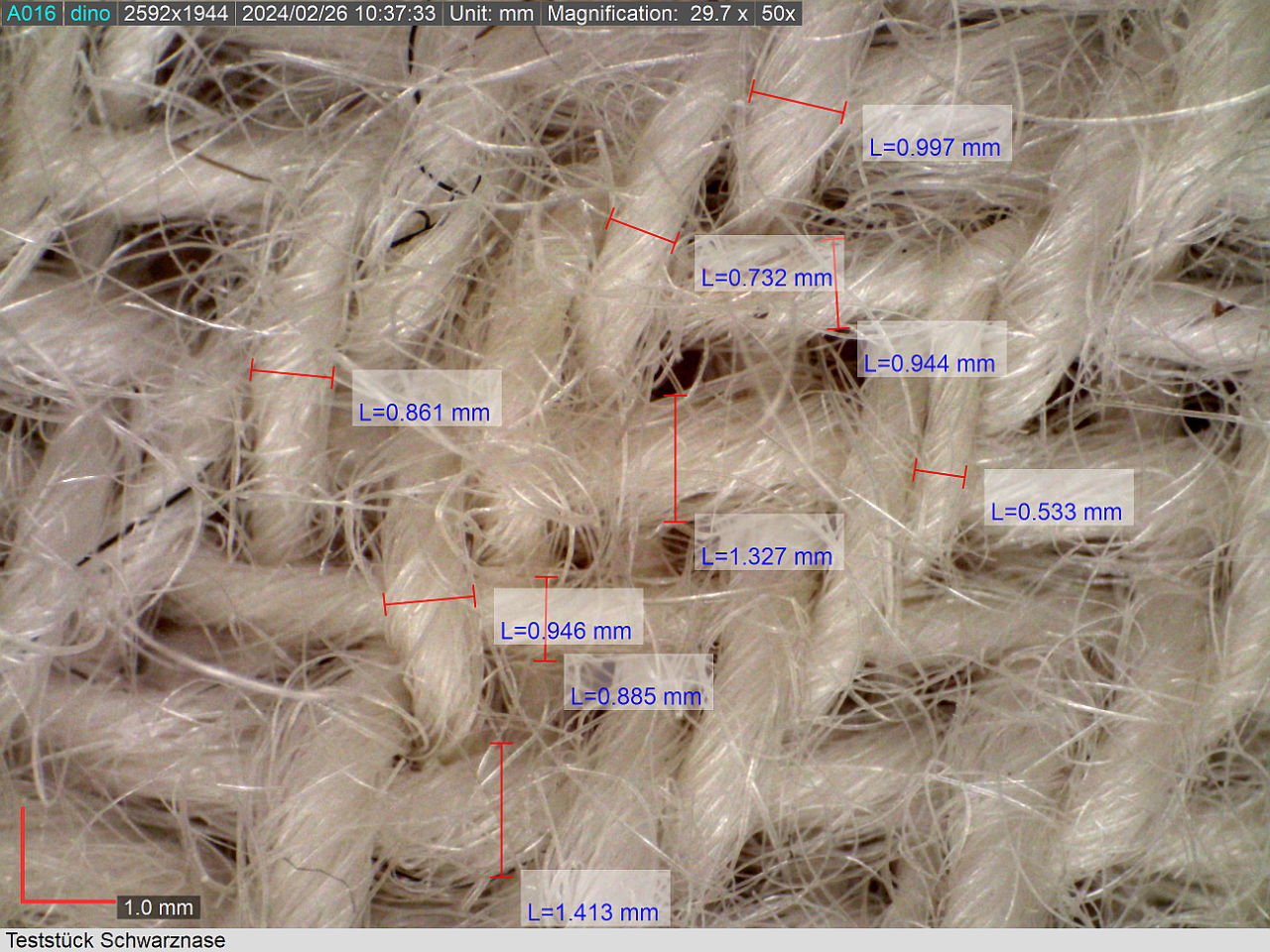Today was Warping Day. Well, Warping Afternoon - fortunately, the relatively small warps of limited length that we use in the weaving workshop are quite quick to make. So now I have this, waiting to be packed up:
On the left there's a few "oh no bad things happened" warps, prepared in case something bad happens and we need a quick new one. On the right... that's a stack of edge tablets, waiting to be installed at some point.
Edge tablets - usually all threads in one colour, and two or more of those monochrome tablets per edge - are an absolute fixture in historical bands. They make for neat edges, and if you weave patterns with my system, they are one way to tell which tablets turn in which direction.
However... adding edge tablets also makes warping a little more time-consuming, and it means one more thing to keep track of. That's why I did my workshops without edge tablets in the past. (Remember what I wrote about things evolving? That's one of them.) I've thought about a few different options on how to include them without making things too weird at the beginning, and I think I have found the solution and the hopefully impeccable timing for adding edge tablets: The point where they are actually helpful, and where the basic understanding stuff that does not require extra "empty brainless twisting" has already happened.
Next Monday I will know more. Now there's a tad more preparation to do, but the main stuff has all happened.
Oh, and due to the Bahn going on strike on Thursday and Friday... I will have to figure out whether I can go by train (probably not) or will have to take the car after all. Sigh.





